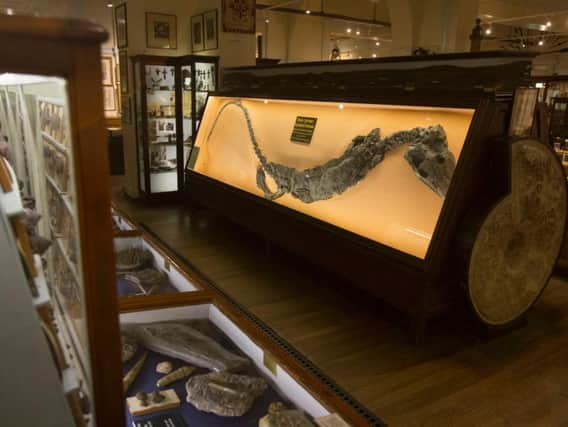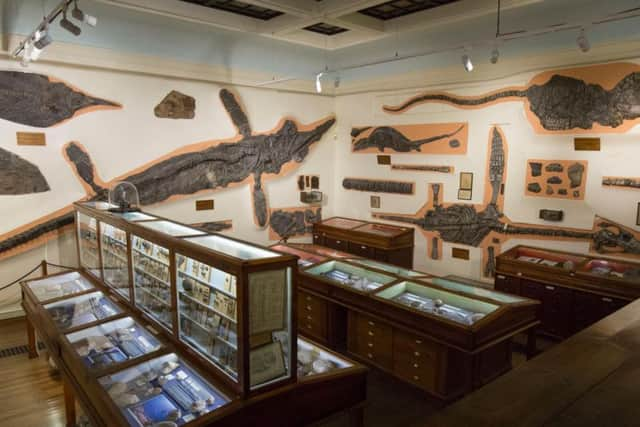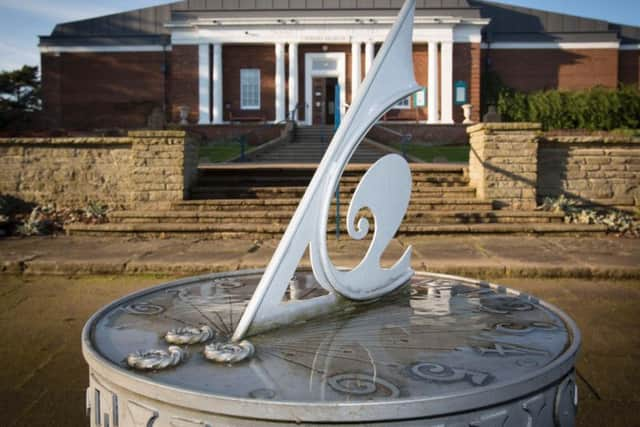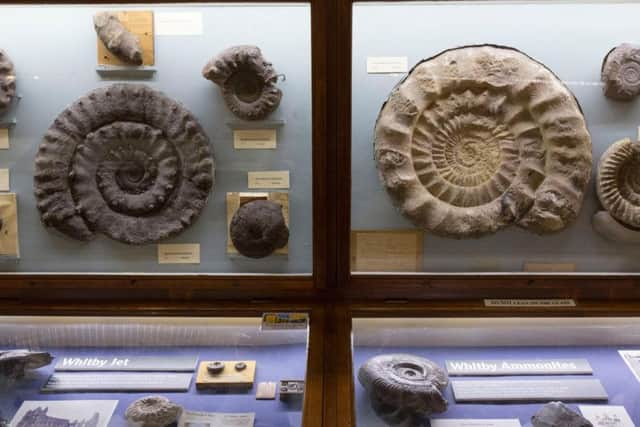Feature: When Whitby was a world of dinosaurs


To this day, one of the finest collections of Jurassic fossils is found within Whitby.
Located in Whitby Museum, Pannett Park, lies a piece of history dating back into prehistoric times.
Advertisement
Hide AdAdvertisement
Hide AdA stunning collection of bygone creatures who over the years, have been molded into stone, hangs imposingly on the walls and in the display cabinets at the museum. Around 200 fossils are housed in the exhibit, with more than 7,000 kept in storage.


One man who probably knows more than anyone else about the museum’s collection and its other proliferation of fossilised treasures is Roger Osborne, a volunteer at the museum who has written a book entitled: The Floating Egg, which covers Yorkshire’s jurassic coastline.
Roger originally studied geology at university and has volunteered at the museum for over 20 years.
“The work and collection at Whitby Museum is of international importance,” he said.
Advertisement
Hide AdAdvertisement
Hide Ad“A lot of museums have fossils from all over the world but Whitby’s collection is special as it is all from the Whitby area and the Yorkshire coast.


“These objects were originally first collected as objects of wonder in alum quarries, and they have gradually gained scientific importance.”
The exhibit itself dates back to the 19th century and contains fossils and rocks discovered since that period, right up to the present day.
As the science of geology grew, Whitby’s extensive fossil collection - including ammonites and its massive marine reptiles - became a vital resource for geologists.
Advertisement
Hide AdAdvertisement
Hide AdIt was in the 18th and 19th centuries that the history of fossils began to gain significant prominence in England, with a heavy focus on Whitby’s naturally rich coastline. Indeed, in his book ‘Dracula’s Whitby’, Ian Thompson labels the area the “Jurassic Coast.”


As society became more interested in the subjects of natural history and science, museums were established to house these remarkable finds.
The first major fossil find from Whitby was discovered by Captain William Chapman and was described by the Gentleman’s Magazine of 1759 as “the skeleton of an alligator found in the Allom Rock near Whitby.” The fossil was named Teleosaurus chapmani Konig and later sent to the British Museum.
One of the driving forces behind the fresh discoveries of the dinosaurs who once ruled Whitby was the demand for alum - a chemical compound used as a fixative for dye in the powerful textile industry.
Advertisement
Hide AdAdvertisement
Hide AdThe shape of the Yorkshire Coast as a whole has been largely dictated by nature, but also by human-history.


Alum quarries were found all along the coastline in the 18th and 19th centuries, with the last works closing in 1871.
It was these quarrymen who uncovered many of the first, most remarkable finds on the Whitby coast.
Indeed, these unintentional fossil hunters initially sold on some of the dinosaurs they had uncovered.
Advertisement
Hide AdAdvertisement
Hide AdHowever, concerned that these artifacts would be lost to Whitby, a group sought to form the Whitby Literary & Philosophical Society in 1823, as a place to house these objects.
One of the major early attractions to the newly founded museum was another fossil of the crocodile Teleosaurus chapmani, acquired for a sum of £7 one year later.
A carpenter from Whitby named Brown Marshall, had spotted a crocodile snout emerging from a cliff and managed to excavate most of the creature hanging from the cliff on ropes. The fossil took over 3 years to remove in its entirety.


The remains of bygone marine creatures still hang proudly on the walls of Pannett Park, rarely failing to impress the visitors from far and wide.
Advertisement
Hide AdAdvertisement
Hide AdRoger Osborne himself was stunned by the exhibit when he first visited. Despite training as a geologist, he worked as a publisher for a number of years until a visit to Whitby’s Museum rekindled his love for fossils.
He said: “I first visited the museum and I just thought, wow this is amazing, there must be some stories here!”
Roger later became involved in the museum, before writing The Floating Egg, within which Whitby’s coastline features heavily.
He explained that there is so much interest in the fossils in Whitby that the book has even been translated into French.
Advertisement
Hide AdAdvertisement
Hide AdThe collection at the Whitby Museum was conserved in the 1990s thanks to the help of grants from the National Lottery Heritage Fund, P.R.I.S.M., CURRY and Pilgrim Trust Funds.
Those wishing to find out more about the fossil collection at the Whitby Museum are advised to visit or read Roger Osborne’s book: The Floating Egg.